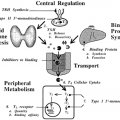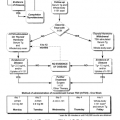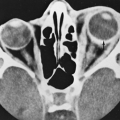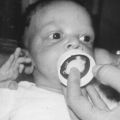THYROID UPTAKE AND IMAGING
Salil D. Sarkar
David V. Becker
Thyroid radionuclide uptake and imaging play an important part in the clinical management of thyroid disease when used in conjunction with a physical examination and laboratory tests. The proper use of radionuclide techniques requires a basic knowledge of their underlying principles and of their clinical advantages and limitations.
Major changes have occurred in the last two decades in the choice of radiopharmaceuticals for thyroid imaging. Iodine-131 (131I), used routinely in the past, is associated with a relatively high radiation absorbed dose to the thyroid. Although no evidence exists of any deleterious radiation effect,1 the use of 131I has been replaced by the use of technetium-99m (99mTc) pertechnetate and iodine-123 (123I) for routine thyroid imaging. Both 99mTc pertechnetate and 123I deliver a much lower radiation dose per μCi deposited, permitting the administration of larger radiotracer amounts that provide higher count rates and improved image resolution. However, 99mTc pertechnetate is not optimsally suited for imaging of metastatic differentiated thyroid cancer. Cancer tissue functions relatively poorly compared with normal thyroid tissue, and 99mTc pertechnetate is usually not accumulated by such tissue in sufficient amounts relative to background for external imaging. Iodine-123, with higher target/background activity ratios, allows imaging of metastases and is being used increasingly as an alternative to 131I, the traditional radiopharmaceutical for the evaluation of metastatic disease. Fluorine-18 fluorodeoxyglucose (18F-FDG) is the newest radiotracer to be used in evaluating thyroid cancer. It may help image metastases not detected with 131I and, therefore, appears to be complementary to the use of radioiodine. For thyroid uptake measurements, 131I continues to be used widely because it is inexpensive, the methodology is simple, and the radiation exposure from the small amount of radioactivity required for this test is low (Table 34-1).
Stay updated, free articles. Join our Telegram channel

Full access? Get Clinical Tree







